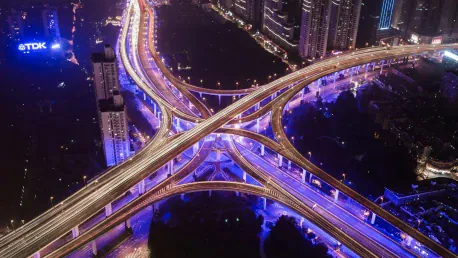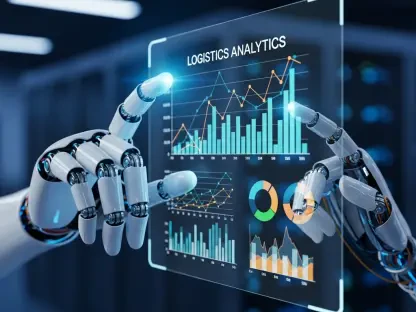Cities worldwide are undergoing a profound transformation, leveraging digital infrastructure, artificial intelligence (AI), the Internet of Things (IoT), and sustainable technologies. These advancements are reshaping various aspects of urban life, including transportation, energy consumption, public services, and work environments. The integration of these technologies is not merely a distant vision; it is already taking shape in numerous metropolitan areas, driving significant improvements in efficiency, livability, and sustainability.
Smarter Transportation and Mobility
Innovations in Traffic Management
Cities like Singapore and London have implemented AI-powered traffic management systems, smart traffic lights, and real-time public transport tracking to minimize traffic congestion and pollution. These initiatives adjust traffic flows and reduce gridlocks, contributing to the creation of cleaner urban environments. By analyzing traffic patterns and predicting congestion, these systems can optimize routes, thus enhancing the overall efficiency of urban transportation networks.
Advanced applications include the expansion of electric vehicle charging stations to support the increasing adoption of electric vehicles. Furthermore, the testing of autonomous vehicles in controlled city environments offers a glimpse into the future of urban mobility. These autonomous systems are expected to provide safer and more efficient transportation solutions by reducing human error and optimizing route selections based on real-time data.
Impact on Urban Mobility
In addition to the evident benefits of managing traffic and reducing pollution, these innovations are also transforming public transportation. Real-time tracking of buses, subways, and trains allows passengers to plan their journeys more effectively, ensuring punctuality and improved service reliability. The integration of smart ticketing systems further enhances the commuter experience by offering seamless payment options and reducing wait times. This interconnected mobility network is essential for creating sustainable and efficient urban environments, ultimately benefiting city residents and visitors alike.
Efforts towards sustainable urban mobility go beyond merely technological innovations. Initiatives such as bicycle-sharing programs and pedestrian-friendly infrastructure complement the high-tech solutions by promoting greener and healthier lifestyles. These measures encourage residents to choose alternative modes of transportation, reducing the reliance on private vehicles and contributing to an overall reduction in urban carbon footprints.
Energy Efficiency and Sustainable Practices
Strategies for Carbon Neutrality
Energy efficiency and sustainable practices are at the heart of smart city development. Cities like Copenhagen are pioneering efforts to become carbon-neutral by integrating wind energy, smart lighting, and district heating systems. These green initiatives illustrate how a combination of renewable energy sources and smart technologies can significantly lower power consumption in urban environments. Investments in smart building technologies, such as automated climate controls and energy-efficient designs, demonstrate an array of possibilities for residential and commercial spaces to achieve substantial reductions in energy usage.
Automated climate control systems utilize data from sensors distributed throughout buildings to adjust heating, cooling, and ventilation in real-time, optimizing energy consumption without compromising comfort. Advanced energy-saving designs, including high-performance insulation and smart windows, also contribute to maintaining efficient indoor environments while minimizing energy waste.
Benefits of Sustainable Practices
Urban environments incorporating these sustainable practices not only benefit from lower energy costs but also enjoy enhanced living standards due to the reduction of pollutants and improved air quality. Smart lighting systems, for example, adjust the intensity of streetlights based on the presence of pedestrians and vehicles, ensuring adequate illumination while saving energy. Similarly, district heating systems efficiently distribute heat generated from renewable sources, significantly reducing the reliance on fossil fuels.
Innovation in sustainable practices extends to waste management solutions, where cities utilize IoT-enabled waste bins to optimize collection routes and schedules. This reduces unnecessary pickups, lowers emissions from waste collection vehicles, and ensures a cleaner environment. Smart water management systems, implemented in various cities, help detect leaks and monitor water usage to prevent wastage. These systems are essential in conserving vital resources and maintaining the sustainability of urban areas.
AI-Driven Public Services and Urban Safety
Enhancing Efficiency in Governance
The deployment of AI-driven public services and urban safety measures is transforming the efficiency and security of city governance. Real-time surveillance through AI-powered cameras and sensors, combined with predictive policing techniques, enables law enforcement agencies to anticipate and prevent criminal activities more effectively. These technologies offer improved situational awareness and rapid response capabilities, contributing to safer urban environments.
Automated emergency response systems, equipped with real-time data from various sources, allow cities to coordinate resources efficiently during crises. For example, AI algorithms can analyze the nature of an emergency and deploy the appropriate response units, such as fire departments, medical teams, or law enforcement, to the incident site with precision. This capability significantly enhances the efficacy of emergency services and ensures timely assistance to those in need.
Optimized Waste and Water Management
Cities like Barcelona have embraced IoT-powered waste bins, which communicate fill levels and enable more efficient waste collection scheduling. This reduces unnecessary collection trips, lowers operational and fuel costs, and decreases traffic congestion caused by waste management vehicles. The optimization of waste collection also plays a vital role in reducing the environmental impact associated with waste disposal.
Smart water management systems, such as those implemented in Singapore, address issues related to water wastage and distribution efficiency. These systems utilize sensors to detect leaks promptly and monitor water quality, ensuring that the water supply remains safe and uninterrupted. By reducing water waste and ensuring the efficient distribution of this essential resource, smart cities can better cope with the challenges posed by urbanization and climate change.
Future Work Environments in Smart Cities
High-Tech Workspaces
The future of work in smart cities is being revolutionized by advancements in connectivity and IoT-enabled workspaces. The ubiquity of 5G networks allows for seamless communication and collaboration, essential for modern work environments that prioritize flexibility and efficiency. Projects like Toronto’s Quayside feature cutting-edge workspaces equipped with AI-powered lighting, smart temperature controls, and automated security systems. These innovations enhance productivity, ensuring that workspaces are comfortable and conducive to high performance.
Smart coworking spaces are an emerging trend, offering fully equipped offices with digital collaboration tools and AI assistants. These spaces cater to the growing demand for flexible work arrangements, facilitating remote work and reducing the reliance on traditional office setups. By integrating technology to foster collaboration and communication, these coworking environments enable professionals to work efficiently from various locations, thus reshaping the landscape of urban employment.
Productivity and Flexibility
IoT-enabled workspaces are designed to adapt to the needs of their users by utilizing data from embedded sensors to analyze patterns and preferences. For instance, smart desks can adjust their height based on users’ preferences, while environmental controls maintain optimal working conditions. These personalized adjustments enhance comfort and productivity, allowing professionals to focus on their tasks without distractions.
The integration of digital collaboration tools, such as virtual meeting platforms and real-time project management software, ensures seamless communication among team members regardless of their physical locations. This flexibility is crucial in today’s interconnected world, where remote work is increasingly becoming the norm. By supporting diverse work arrangements, smart cities can attract a wide range of talent and foster a dynamic professional environment.
Challenges and Considerations
Data Privacy and Security
Despite the multitude of benefits, the development of smart cities comes with significant challenges, particularly concerning data privacy and cybersecurity. The integration of AI and IoT devices necessitates robust measures to protect sensitive information and prevent unauthorized access. Ensuring the security of data collected from various sources is paramount, as any breach or misuse can lead to serious ramifications for individuals and the broader community.
Concerns related to surveillance and the potential misuse of data also need to be addressed. Policymakers and city planners must establish regulations to govern data collection, storage, and use, protecting citizens’ privacy while fostering innovation. By implementing transparent data policies and employing advanced encryption technologies, cities can mitigate these risks and maintain public trust in smart city initiatives.
Equitable Access to Technology
Ensuring equitable access to technology is another critical consideration for smart city development. As urban areas become increasingly reliant on digital infrastructure, it is essential to bridge the digital divide and ensure that all residents have access to the benefits of smart city initiatives. This includes providing affordable internet access, digital literacy programs, and ensuring that technological advancements do not disproportionately favor certain demographics.
Efforts to promote digital inclusion should focus on marginalized communities, ensuring that everyone has the opportunity to participate in and benefit from the technological transformation of urban environments. By addressing these challenges proactively, smart cities can create more inclusive and resilient communities that leverage technology for the greater good.
A Brighter Future for Urban Living
Cities around the world are experiencing a remarkable transformation, powered by digital infrastructure, artificial intelligence (AI), the Internet of Things (IoT), and sustainable technologies. This wave of innovation is revolutionizing various facets of urban life, from how we get around to how we manage energy, access public services, and structure work environments. The convergence of these technologies is not a far-off dream; it is currently unfolding in many major cities, resulting in substantial advancements in efficiency, quality of life, and environmental sustainability. These changes are making cities smarter by enhancing traffic management systems, optimizing energy grids, and improving public services delivery. Additionally, AI and IoT are being used to create more responsive and adaptable urban environments, making cities not only more livable but also more resilient. As a result, metropolitan areas are becoming more connected and intelligent, ensuring a better quality of life for their residents while promoting sustainable growth and development.









